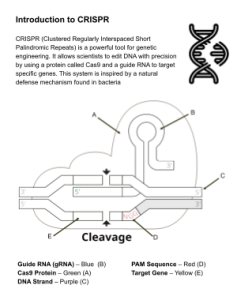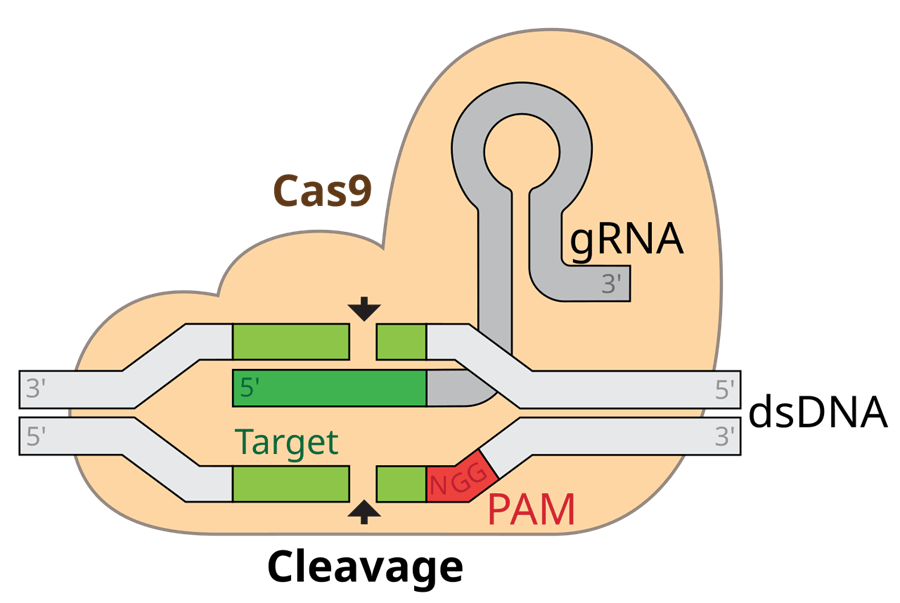
Gene editing might sound complex, but what if you could color your way to understanding it? CRISPR-Cas9 is a gene-editing tool that allows scientists to precisely cut and modify DNA. Inspired by a natural defense system in bacteria, CRISPR uses a guide RNA (gRNA) to direct the Cas9 protein (a molecular scissor) to a specific DNA sequence.
Once there, Cas9 cuts the DNA, allowing scientists to remove, repair, or replace genes. This technology is already being used in medicine, agriculture, and research—but it can be tricky to learn. There are lots of elements to the model, and students will need to already understand DNA and RNA to fully appreciate how it works. Check out this DNA and RNA coloring model if your students need a refresher.
CRISPR-Cas9 is revolutionizing science, from curing diseases to improving crops, and even editing the human genome. Learn how a powerful protein can change an organism at the molecular level. In this activity, students read about this groundbreaking technology, color a diagram, and answer questions.
Color to Learn🎨🧬
Visual learning is powerful! Students color-code key parts of CRISPR, including:
✅ Guide RNA – The “GPS” that directs Cas9
✅ PAM Sequence – The special NGG signal needed to cut
✅ Cas9 Protein – The molecular scissors
✅ Target Gene – The section being edited
✅ DNA Strand – The blueprint of life
CRISPR in Action! 🚀
Students don’t just learn how CRISPR works—they see real-world applications:
🩸 Curing Sickle Cell Disease – Fixing faulty hemoglobin
🧠 Treating Huntington’s Disease – Silencing the mutated gene that causes neurodegeneration

How CRISPR Edits a Gene – Step by Step
- Targeting the Gene – A specially designed guide RNA (gRNA) binds to the target DNA sequence.
- Finding the PAM Sequence – The Cas9 protein only cuts if a nearby PAM (NGG) sequence is present.
- Cutting the DNA – Cas9 acts as molecular scissors, making a double-strand break in the DNA.
- Cell Repairs the DNA – The cell fixes the break using one of two methods:
- Non-Homologous End Joining (NHEJ) – Repairs the DNA but may introduce mutations, potentially disabling the gene.
- Homology-Directed Repair (HDR) – Uses a provided DNA template to make precise genetic changes.

